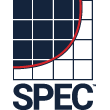The SPECapc Benchmark — A User's Story
By Jessica Heerboth, SPECapc Committee Chair
Ashley, a college sophomore majoring in graphics and design, specializes in 3D modeling. Her final project at the end of her freshman year was to create and animate a 3D game character that exhibited some lifelike characteristics when running, jumping and throwing.
Her modeling tool of choice was Autodesk Maya 2024, the latest version of the popular 3D software that both professionals and enthusiasts use to create realistic characters and blockbuster-worthy effects. However, Ashley's animation process required her to frequently make small tweaks to a frame and then re-render the animation to see how that small tweak looked before making the next tweak. Unfortunately, the laptop computer she'd used since high school wasn't equipped with powerful enough hardware to support fast rendering of the animation, forcing her to sit idly for 10 or 15 minutes while each re-rendering finished - amounting to several hours of wasted time each day.
In the market for a new laptop, Ashley began searching online for a way to gauge what hardware the new computer should have and how much it would cost. She didn't want to purchase a laptop only to discover it wasn't powerful enough, but she also didn't have the budget for something super high end.
While looking online, Ashley was initially overwhelmed by all the different models and specs offered by the different manufacturers, and the independent reviews never seemed to answer the question of which machine would be best for her particular needs. Fortunately, however, her research led her to a Maya user community website where she read several discussions about members using the SPEC website to help them rate the performance of their computers. She went to the SPEC website, read a few blog posts and decided that the SPECapc for Maya 2024 benchmark, which enables users to test the performance of systems running Autodesk Maya 2024, could help her determine her hardware needs.
The SPECapc for Maya 2024 benchmark consists of 43 tests using 11 different models and animations. It includes eight different graphics tests in various modes and five different CPU tests. The graphics-oriented tests use six different Maya view settings -- Shaded, Shaded SSAO, wireframe on shading, wireframe on shaded SSAO, textured, and textured SSAO. Various tests measure both animation and 3D model rotation performance, and five CPU tests within the benchmark perform CPU ray tracing and evaluation caching in various modes.
Since she wasn't a computer vendor, Ashley could download and run the benchmark for free, and doing so would give her a better understanding of what the benchmark was about and let her compare the performance of her current machine with the laptops listed on the SPECapc for Maya 2024 benchmark results page. This would be a more reliable way to get a sense of the performance boost she could expect from the range of laptops available in her price range.
Downloading and installing the benchmark was straightforward and quick, but as expected, her computer slogged through the various tests. It was then easy for Ashley to see on the benchmark results page the significant performance boost she could get from an upgrade, and she chose the best performing laptop within her budget.
Ashley was delighted that she was able to get the information she needed for a decision based on some hard data instead of just relying on the reviews and user anecdotes she found online. After purchasing and setting up the new laptop, she downloaded and ran the benchmark again, confirming the hoped-for performance improvement, and she was soon breezing through her school project, saving several hours each day that she was able to spend on other end-of-term requirements.
[Back to SPEC blog]




